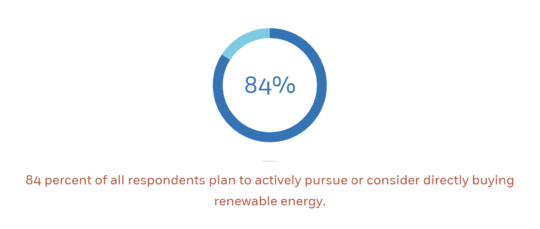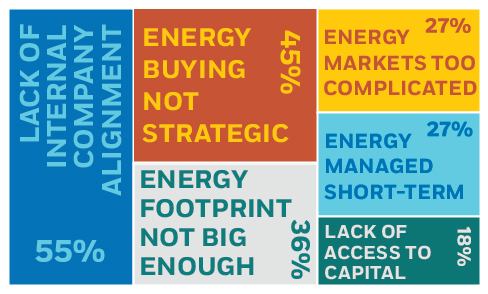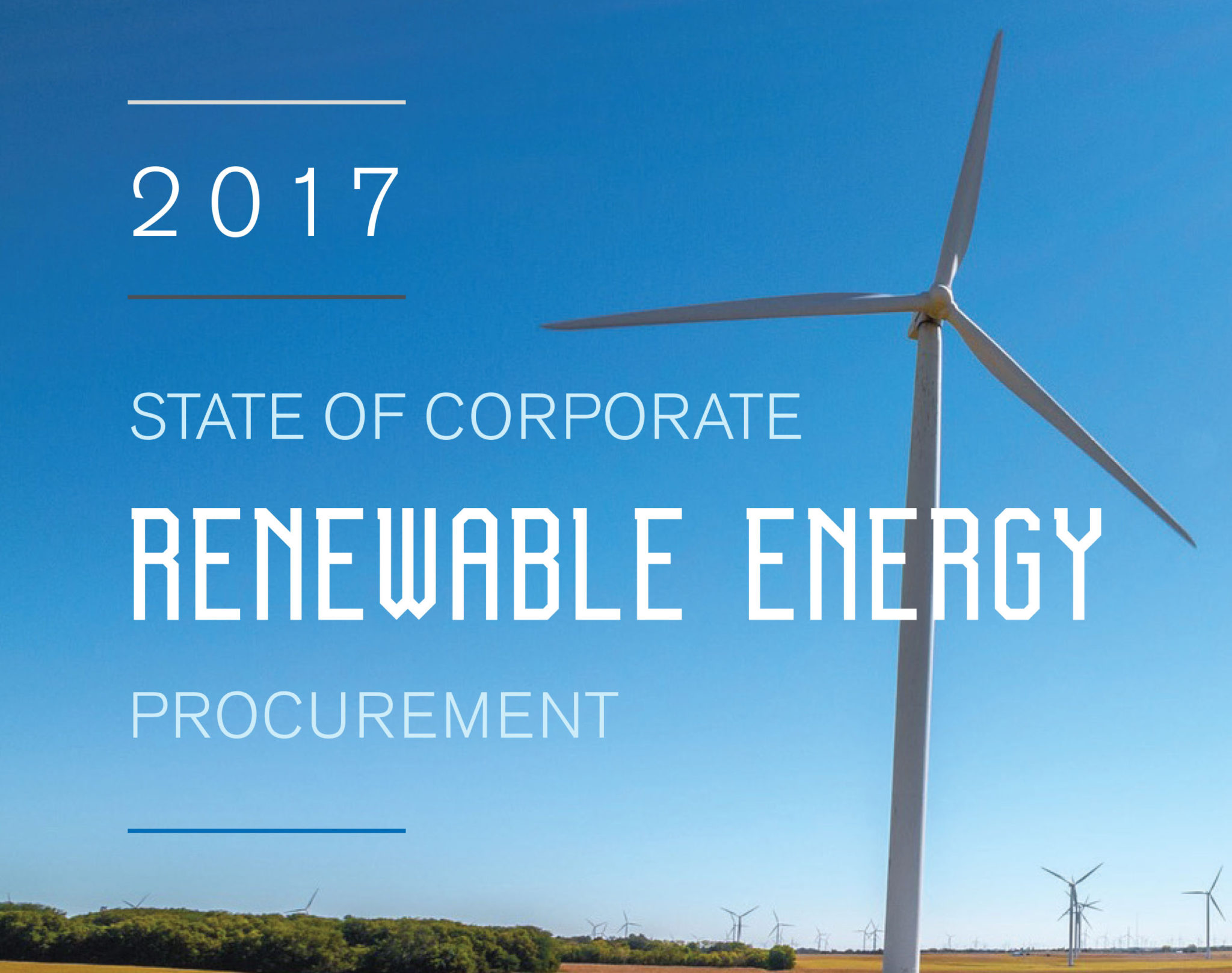What Do Corporations Want from Clean Energy?
More than just a low price.
In new research conducted in partnership with Apex, the GreenBiz Group surveyed more than 150 business leaders from companies with annual revenues over $250 million about their energy strategies, specifically the factors driving their consideration of, commitment to, or contracted direct procurement of renewable energy.
When multiple reports are released each year tracking corporate and industrial deals to procure clean energy, why did we invest in this research? The answer is simple.
There is a disconnect in the market that is keeping scores of companies that have committed to clean energy from following through. Apex, as well as our peers that develop utility-scale renewable energy, has projects in development to suit virtually any corporate need. But root inefficiencies in the market are separating buyers from sellers.
Some of the findings of the research, conducted in August 2017, are what you might expect. The private sector is undeterred by the federal government’s stated intention to pull out from the Paris climate accord. More than four in every five respondents, representing a broad range of industry sectors, plan to be active in the renewable energy market in the next decade. Furthermore, nearly half of those are ramping up their initiatives in the next 24 months.
Underpinning this momentum is the continually improving economics of wind and solar. Fully 65 percent of respondents indicated that the rapidly falling price of clean energy is a driver of converting their commitment to procure renewable energy into a decision to buy. The numbers are penciling out.
However, our big takeaway is that when it comes to achieving sustainability goals, companies are determining their own definition of value when it comes to procuring renewable energy. Like so many aspects of life and business, the cheapest option is not necessarily the best strategic fit.
Companies differ wildly by sector, location, load requirements, and a host of other criteria. Price does not equal value. The research shows that drivers and barriers are not uniform across companies.

Why is this important? It seems intuitive that the shift from viewing energy procurement as a commodity contract to the cornerstone of a brand-shaping sustainability initiative would have different ramifications for technology companies, retailers, manufacturers, healthcare providers, and so on.
Our big takeaway is that when it comes to achieving sustainability goals, companies are determining their own definition of value when it comes to procuring renewable energy.
The market, which is rapidly both maturing and expanding, provides an immense number of options in terms of offtake, additionality, and financial participation in projects. Yet there is a failure in the default procurement process. Buyers are not receiving critical education about those options. Instead, an environment shaped by third-party deal-brokers continues to funnel buyers into deal-focused mindsets focused almost exclusively on price.
This breakdown is evidenced in the data. Whereas the primary drivers of corporate sustainability goals are addressing energy and emissions targets (70 percent of respondents) and demonstrating corporate leadership (65 percent), the decision to buy is still driven by price (65 percent) like any other business-as-usual electricity tariff. But sustainability is the antithesis of business-as-usual, and the corporate sustainability leaders know that one deal does not get the job done.
Many companies that participated in the survey place a very high value on additionality, helping bring new utility-scale projects out of the ground by assuming some of the market risk. This is the veritable definition of leadership in achieving sustainability at scale. Others value diversity, sourcing clean energy from projects in multiple regions and hubs within the regions, along with contracts of multiple term lengths that leverage more than one generation technology. This is a sound principle of investing.
Then why does the market continue to promote a “market timing” mindset? The benefits of a more strategic change happen over time. Respondents cited benefits in hiring and retaining the best talent, meeting the demands of top customers and partners (including the federal government), and the downstream ability to begin shaping the actions of supply chains.
“We read the writing on the wall … and decided that we could either lead on it or wait for others, and decided it made sense for us to lead,” said a sustainability executive with a Fortune 100 company.
It is our view at Apex that there has never been a better time—supported by the availability of capital, tax incentives, and a broad and diverse pipeline of utility-scale wind and solar projects in development—for corporate and industrial buyers to make good on their commitments.
Like so many aspects of life and business, the cheapest option is not necessarily the best strategic fit.
If we are to wake up a year from now and see a closing of the delta between commitments and contracted purchases, two things clearly need to happen.
First, there must be a step change in educating stakeholders in available market solutions, helping create internal alignment among corporate and industrial energy purchasers. Nongovernmental organizations such as the Business Renewables Center and the Renewable Energy Buyers Alliance are doing a fantastic job tracking procurement statistics and convening the right people. The next step is reframing clean energy purchasing as an investment in sustainability, one that speaks beyond the CFO’s office.
Top Barriers to Purchasing Renewable Energy

Second, there must be a broader movement to shape federal and state policies that further expand purchasing opportunities to meet the specific demands of the market. The companies that initially led the movement to both set goals and enter contracts to procure clean energy are moving to this next level of advocacy, and trade groups such as the Advanced Energy Economy are providing new forums to do so.
What’s critical to both of these objectives is the idea of empowering buyers. With information, with expanded opportunity, and with increased comfort to explore bilateral negotiations, producers of clean energy can partner with purchasers to turn commitments into action.
Our research proves that rising demand is ready to meet a maturing market. What we are seeing today is the beginning of a turning point for sustainable power generation. The missing piece is a new appreciation for the value of investing in sustainability, one that fully appreciates the scale of the task ahead: a private sector–led modernization and decarbonization of our national electric grid.
